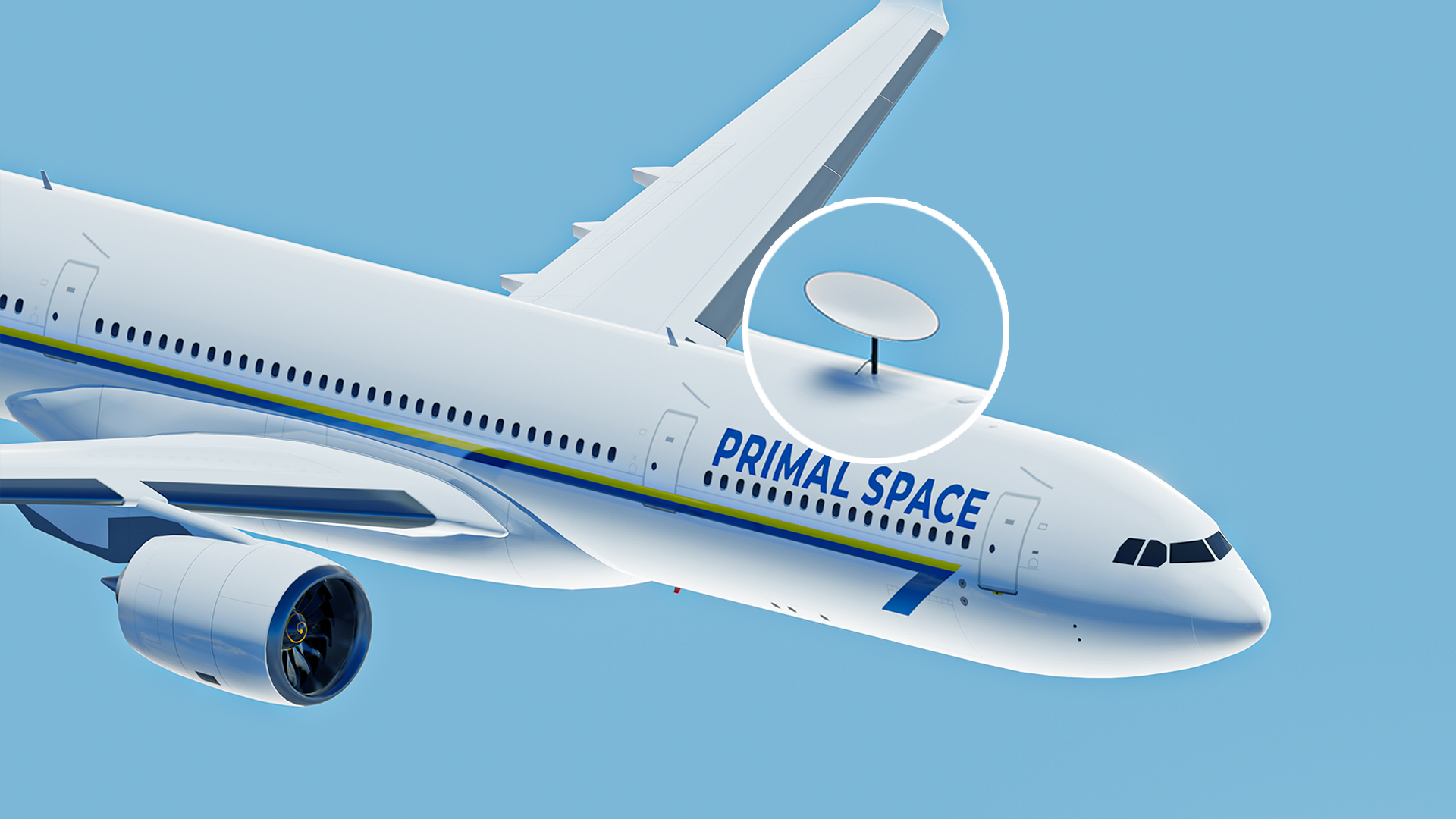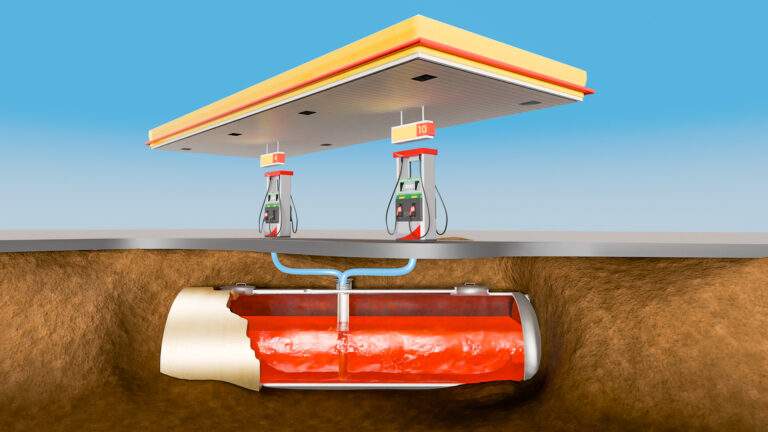If you’ve ever been on a flight and purchased the onboard WiFi, you’ll know that this experience is almost always followed by instant regret. After entering your card details and dealing with a crappy login page, you’re faced with an internet connection that belongs in the 90’s. But airplane WiFi isn’t even a new thing.
Back in 2001, Boeing introduced their own WiFi service called Connection, but spelled with an X, because it was the early 2000’s. This service was slow and expensive, but without YouTube and Netflix, people didn’t need such fast internet. But why is airplane WiFi so bad in the first place and how is SpaceX’s Starlink about to improve it? In order to answer this, we need to look at how airplane WiFi currently works.
Traditional Airplane WiFi
An airplane has two methods of sending and receiving a signal. It can either get it via cell towers on the ground, or it can connect to a satellite. Since most flights take place over ground, airlines typically prefer the air-to-ground method.
These cell towers are similar to the 4G ones that our phones connect to. However, since an airplane is much further away, the signal maxes out at around 3 megabits per second, compared to 40 megabits per second, which you would get from a 4G tower. And so, with such a tiny amount of bandwidth being shared between multiple passengers, it’s no surprise that airplane WiFi is so slow.
Because of this, airlines can drastically overcharge for their WiFi to reduce the amount of users clogging the system. So for the 3 passengers that actually paid for the 30 dollar WiFi, the speeds are probably not too bad. But a much faster form of WiFi comes from above, and this is where SpaceX comes in.

For satellite internet, a ground-based antenna transmits the signal up to a geostationary satellite 36,000km above the Earth’s surface. The satellite then relays that signal down to the airplane, where it’s received by a large antenna on top of the fuselage.
These satellites typically use Ku or Ka band systems to communicate, reaching speeds of up to 50 or 70 megabits per second. This is a nice improvement over the cell towers. But since there aren’t many of these satellites in space, multiple planes and users will be connected to the same satellite, making the speeds still incredibly slow.
Starlink’s low latency
So how could Starlink get around this problem and provide much more bandwidth to an airplane?
When a satellite sends its signal down to Earth, the power of that signal decreases by the inverse square of the distance. To use very basic numbers, let’s say your satellite is 100 meters away and you are receiving a signal power of 100.
If you doubled the distance between the satellite and the receiver, the power wouldn’t just half, it would drop to 25. The lower the power, the more it starts to blend in with the surrounding noise, causing parts of the signal to be lost. At this point, the bandwidth hits a limit and the data speeds start to drop as it gets further away.
Advantages of Starlink
Think about the signal you receive from your WiFi router at home and what it would be like if you moved it to be several streets away. Since geosats are much further away than Starlink sats, the effect is very noticeable. In order to make up for this power deficit, geosats have to use transmitters and antennas that are much more powerful.
However, these can only be so powerful. In order to match the power received from a Starlink satellite, the geosat’s antenna and transmitter would need to be enormous. For the current generation of geosats, this would make them far too big to fit into the fairing of a rocket.
And so, geosats are physically limited in terms of how much power and bandwidth they can get to an airplane. But Starlink’s biggest advantage perhaps lies in its extremely low latency.
Starlink sats are 65 times closer to Earth than geosats, and so the time it takes for a signal to go up and down is significantly shorter. Although we are only talking milliseconds, this latency has a huge impact on loading webpages, where your device needs to download multiple elements like images, text and adverts.
Sending and receiving data
This data isn’t downloaded all in one go. Instead, your device tries to obtain the data in tiny windows of information. Let’s say the window is 1,000kb and you are 100ms away from the satellite. The sender transmits the first 1,000kb of data to your device, which it receives in 100ms. Your device then needs to send an acknowledgement that it received the data, taking another 100ms.
Now the sender can continue transmitting the next window of data, and the process repeats. These tiny gaps between transmission build up over time. And so, lowering the latency drastically increases how much data can actually be sent every second. With a geosat, the signal takes at least 250ms to reach its destination. With Starlink, the realistic latency is much closer to just 20ms.
More availability

Ultimately, this speed would be worthless if the bandwidth was still being shared by many people. But since Starlink has thousands of satellites operating just above the Earth’s surface, the demand can be spread out and airplanes won’t have to share the bandwidth with so many other customers.
Because of this, the amount of bandwidth that can be sent to a single plane should increase by an order of magnitude. But the actual speed of the WiFi isn’t the only reason that Starlink is so attractive to airliners.
Starlink antenna
The antennas found on most airliners are large and bulky, since they have to physically move in order to track satellites. This hump on the airplane’s fuselage causes a lot of drag, increasing fuel consumption by 0.3%.
This doesn’t sound like much, but over time, this would cost an airline millions of dollars. The great thing about Starlink is that it uses a phased array antenna, which allows the signal to be directed without any moving parts. It uses destructive and constructive interference to steer the radio waves in the right direction.
Not only is this more precise, it also takes up less space, which we can see from this Starlink antenna placed on the side of Starship. SpaceX used Starlink during a test flight to send vehicle data back to the engineers. But what if airplanes could also use Starlink for this purpose?

Aircraft crash investigations
Malaysian Airlines flight 370 is just one of many airplanes that have gone missing over the last few decades. Typically, airplanes record enormous amounts of flight data onto a recorder, located in the tail of the aircraft. After a crash, this recorder is used to give investigators an insight into what went wrong with the aircraft.
But if the plane can’t actually be found, then there’s very little they can take away from the crash. Airplanes have slowly started to send more data back to the manufacturer during flights, but the amount they can send is still very limited.
If Starlink was able to provide a significant increase in bandwidth, each airplane could start sending streams of vehicle data and video feeds back to the airline in real time. This could become a crucial tool in determining what went wrong during a crash.
Although there are still many cost hurdles and strict regulations to overcome, SpaceX has already signed a deal to start providing WiFi for Hawaiian airlines and JSX airlines next year. And so maybe one day in the future, we will be able to effortlessly stream YouTube videos and play video games while flying through the air at 900km/h.














Can you be more specific about the content of your article? After reading it, I still have some doubts. Hope you can help me.